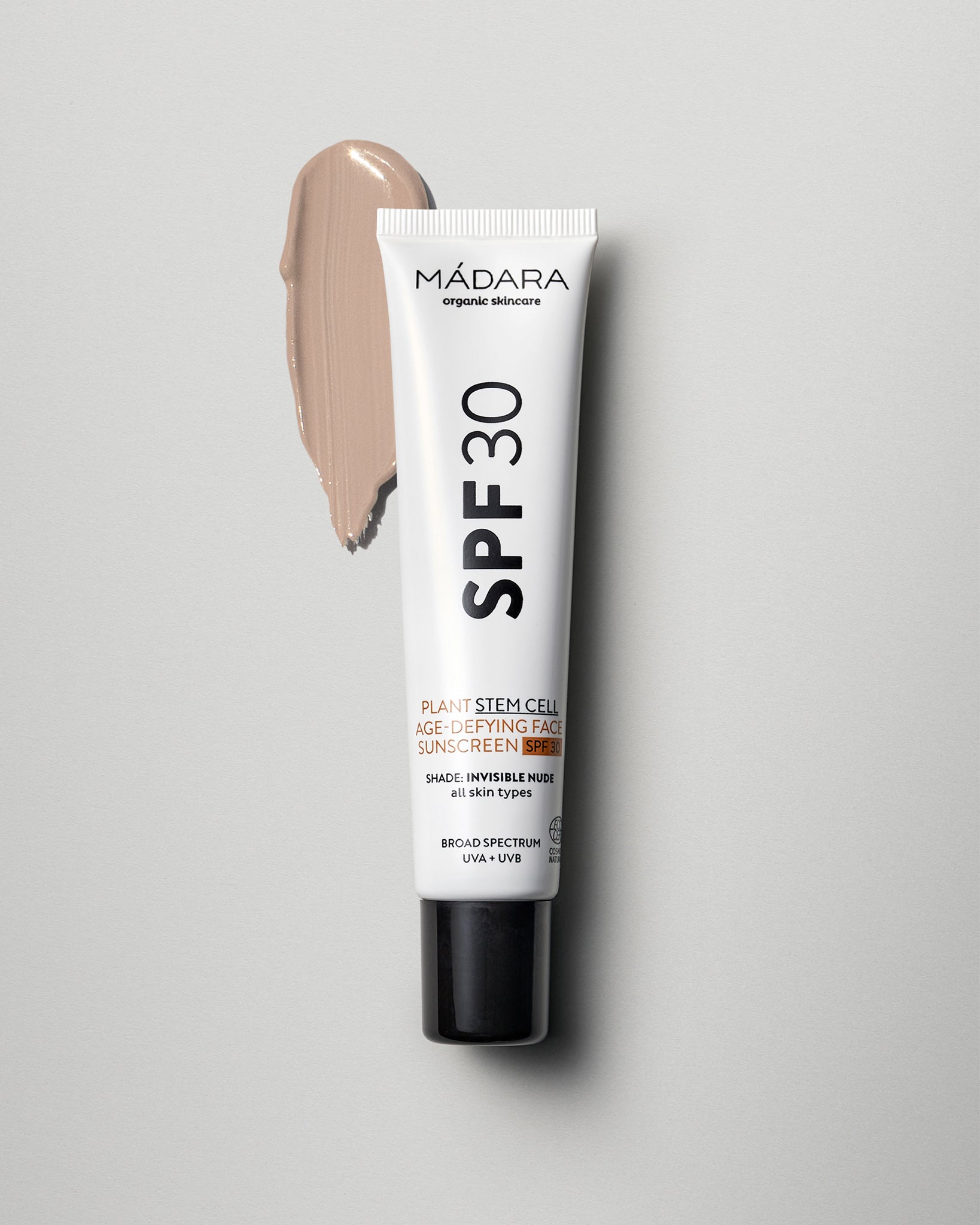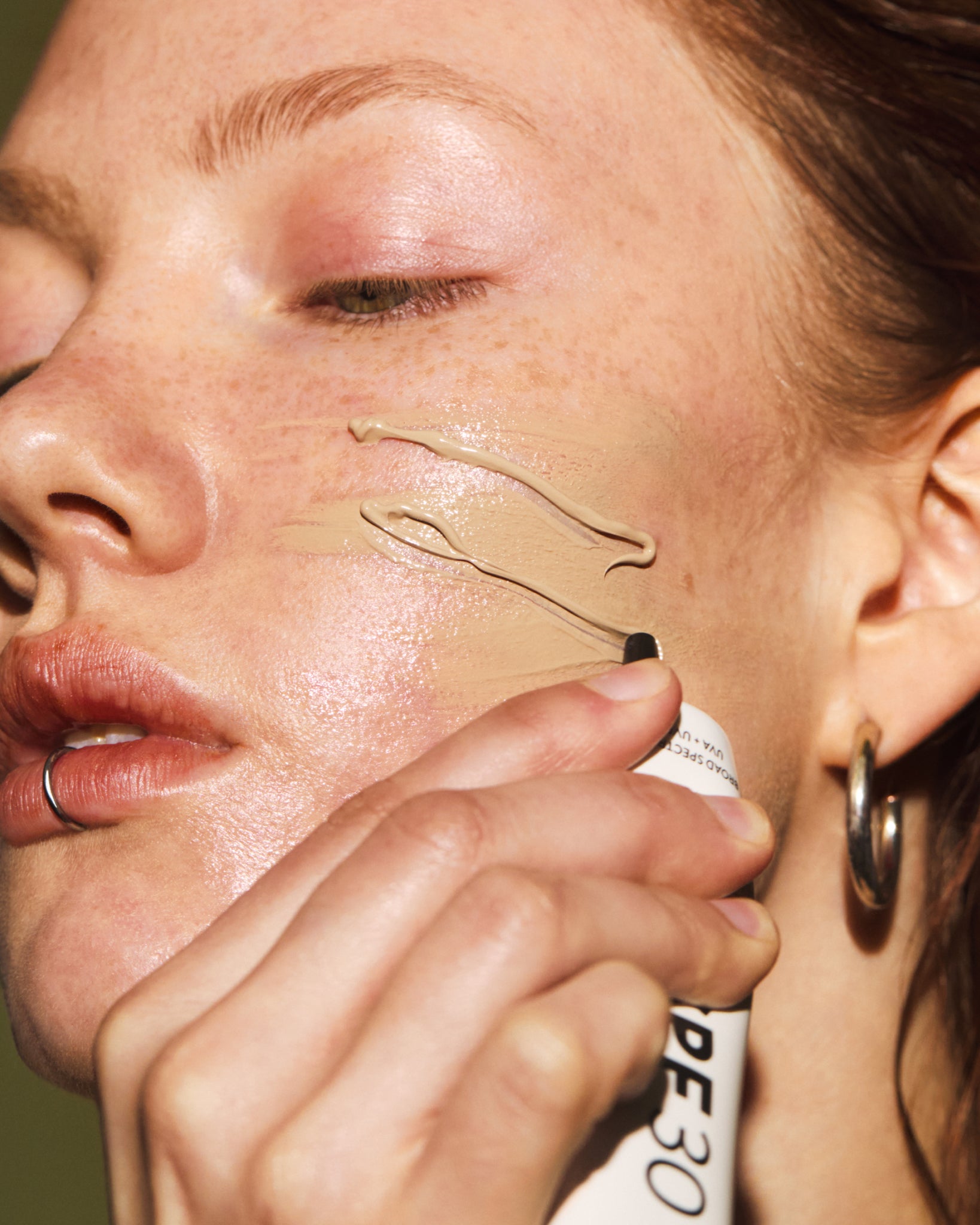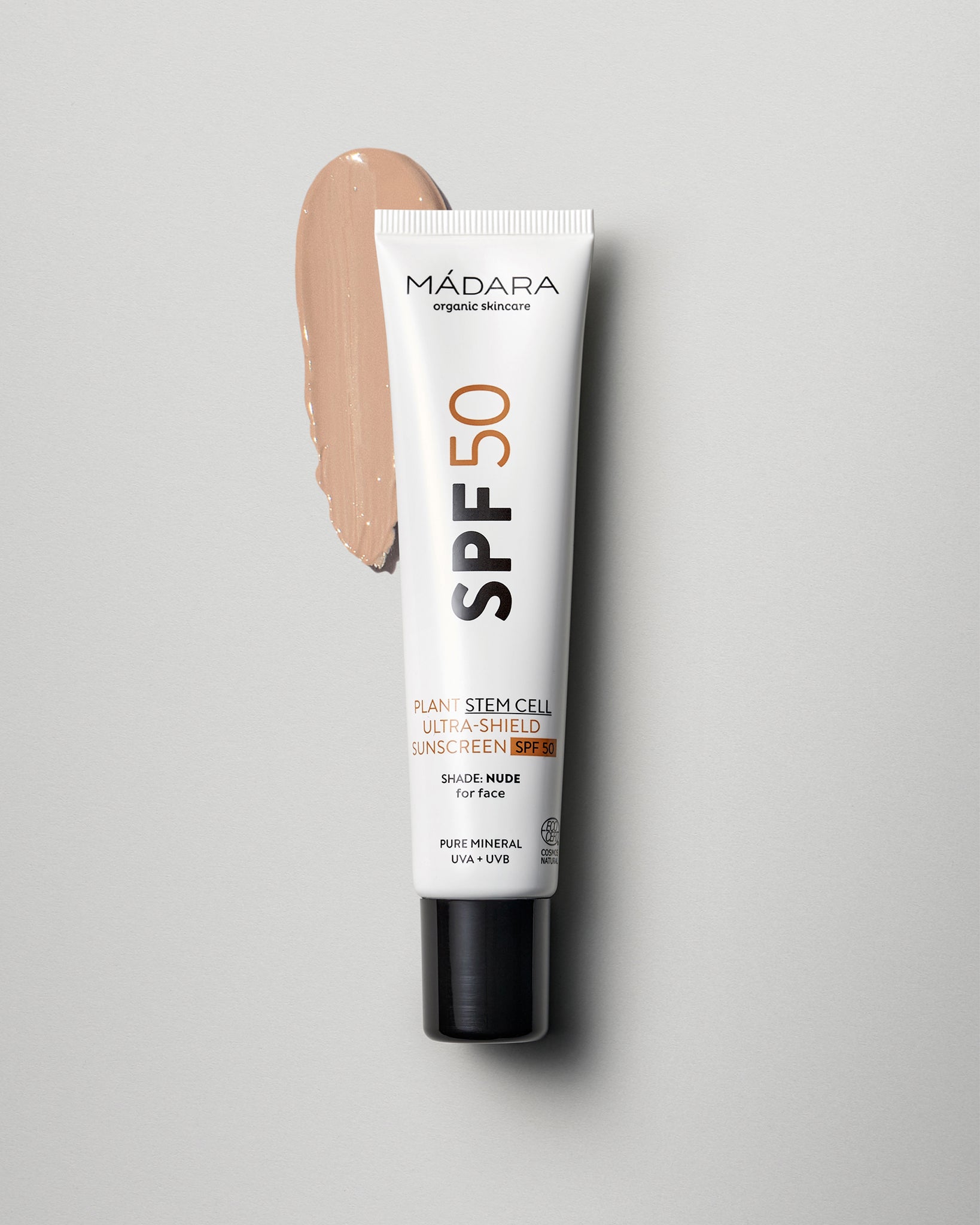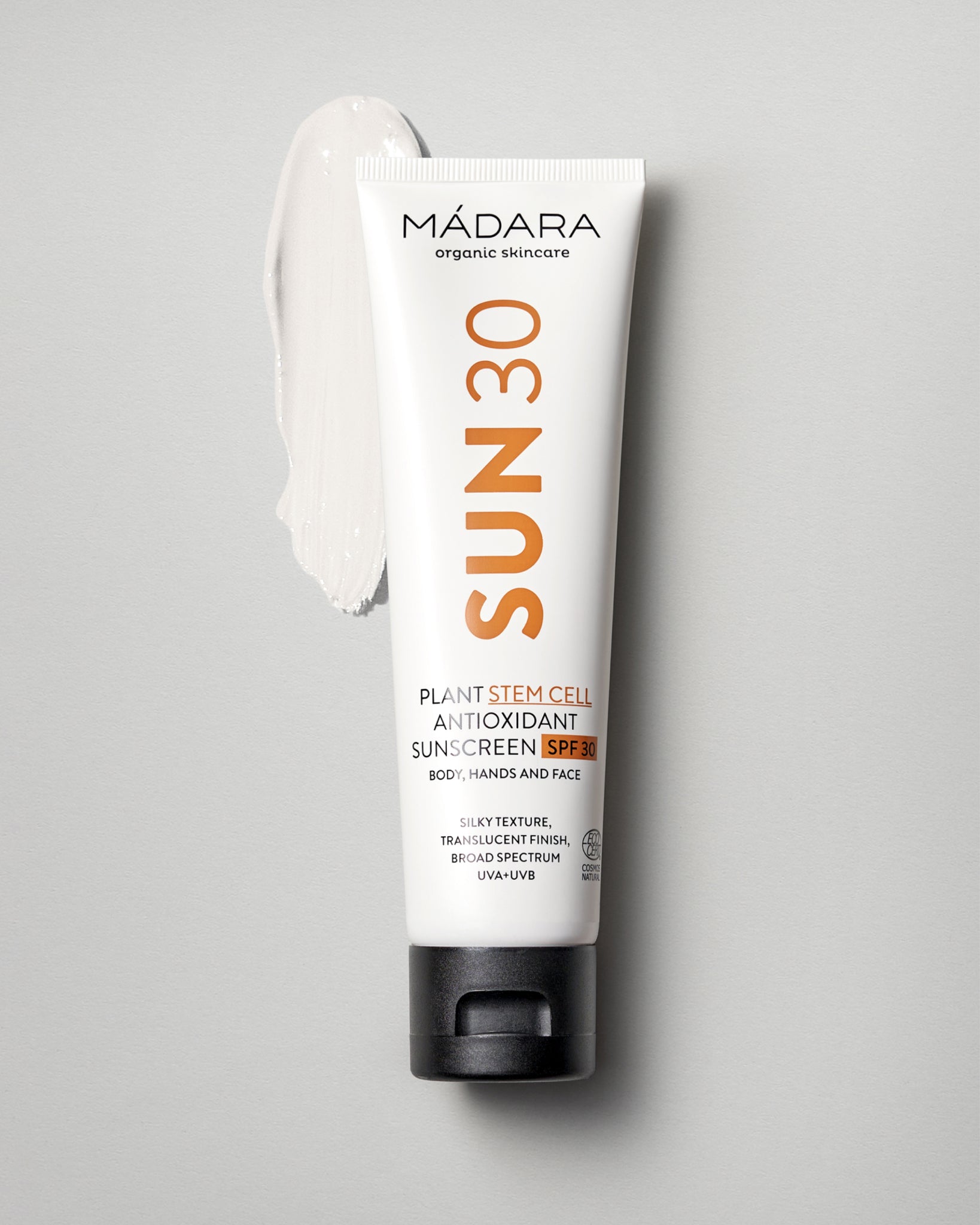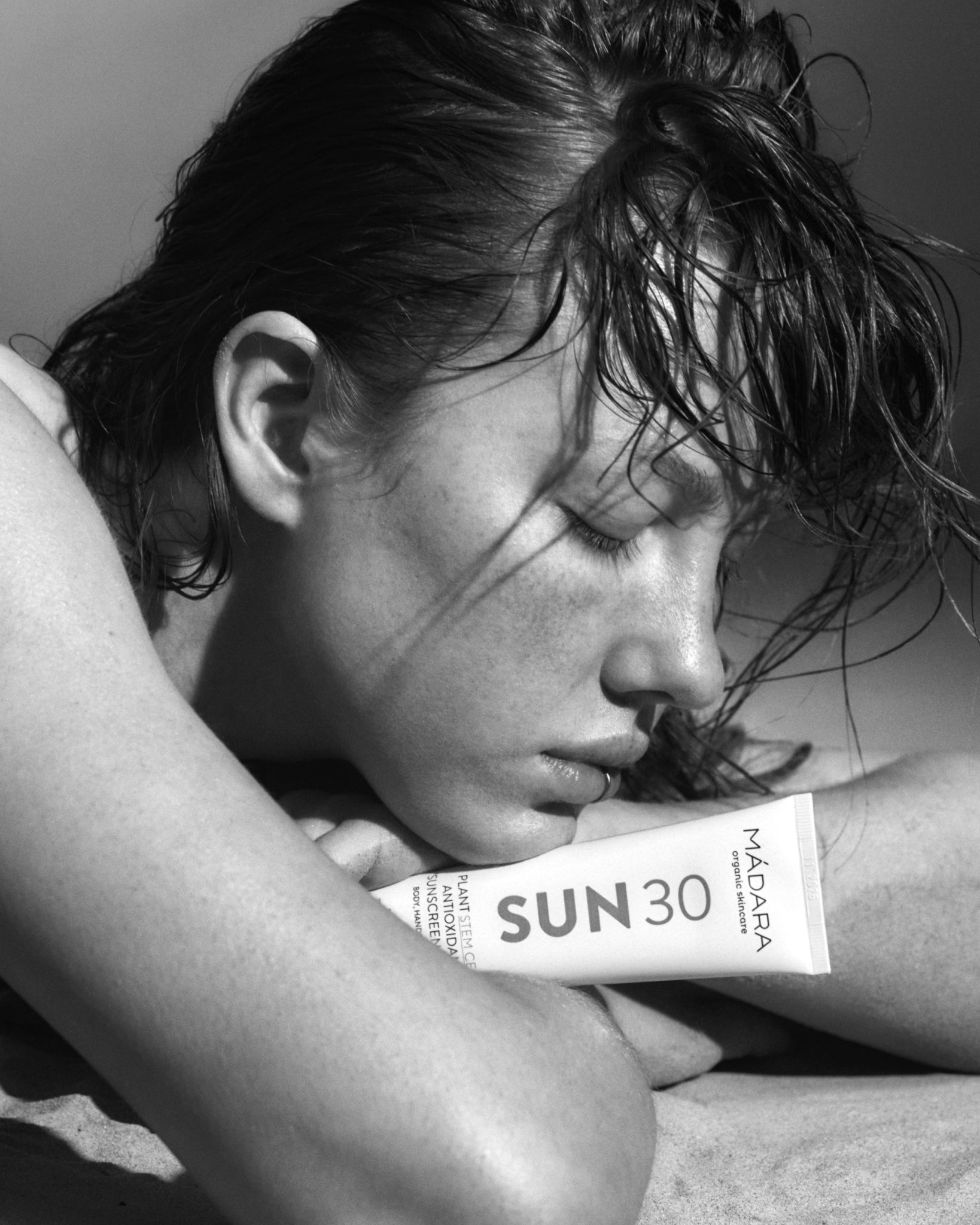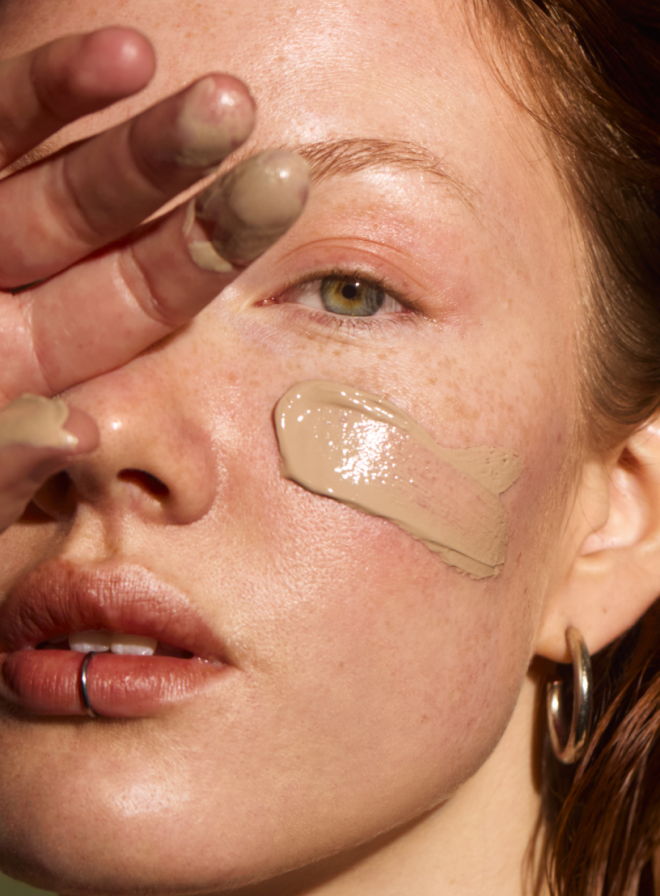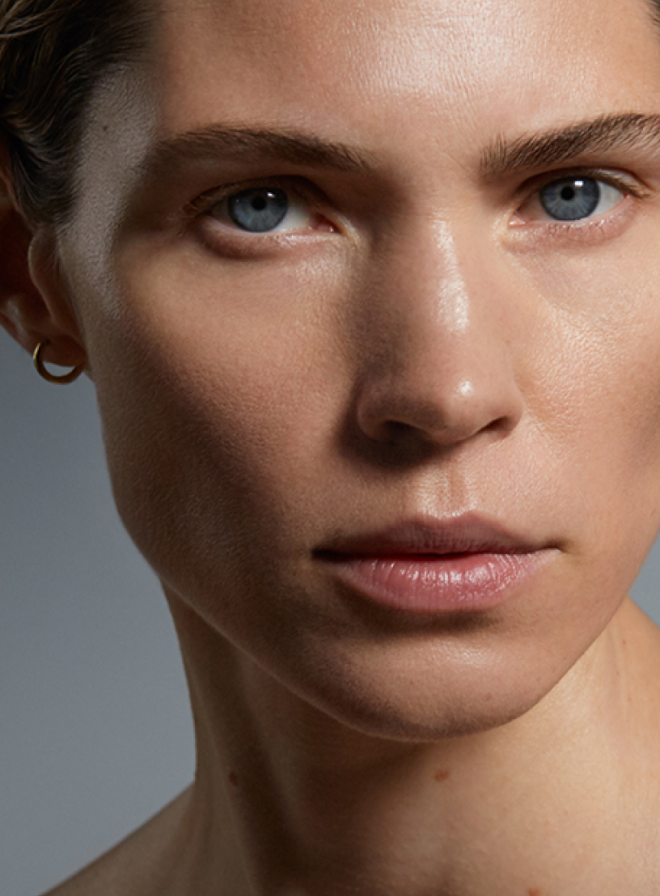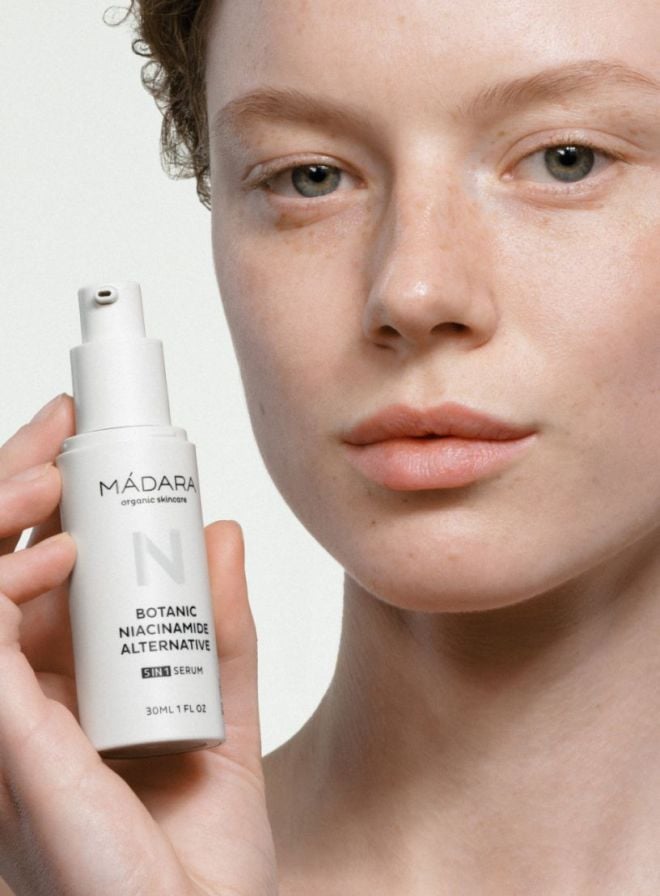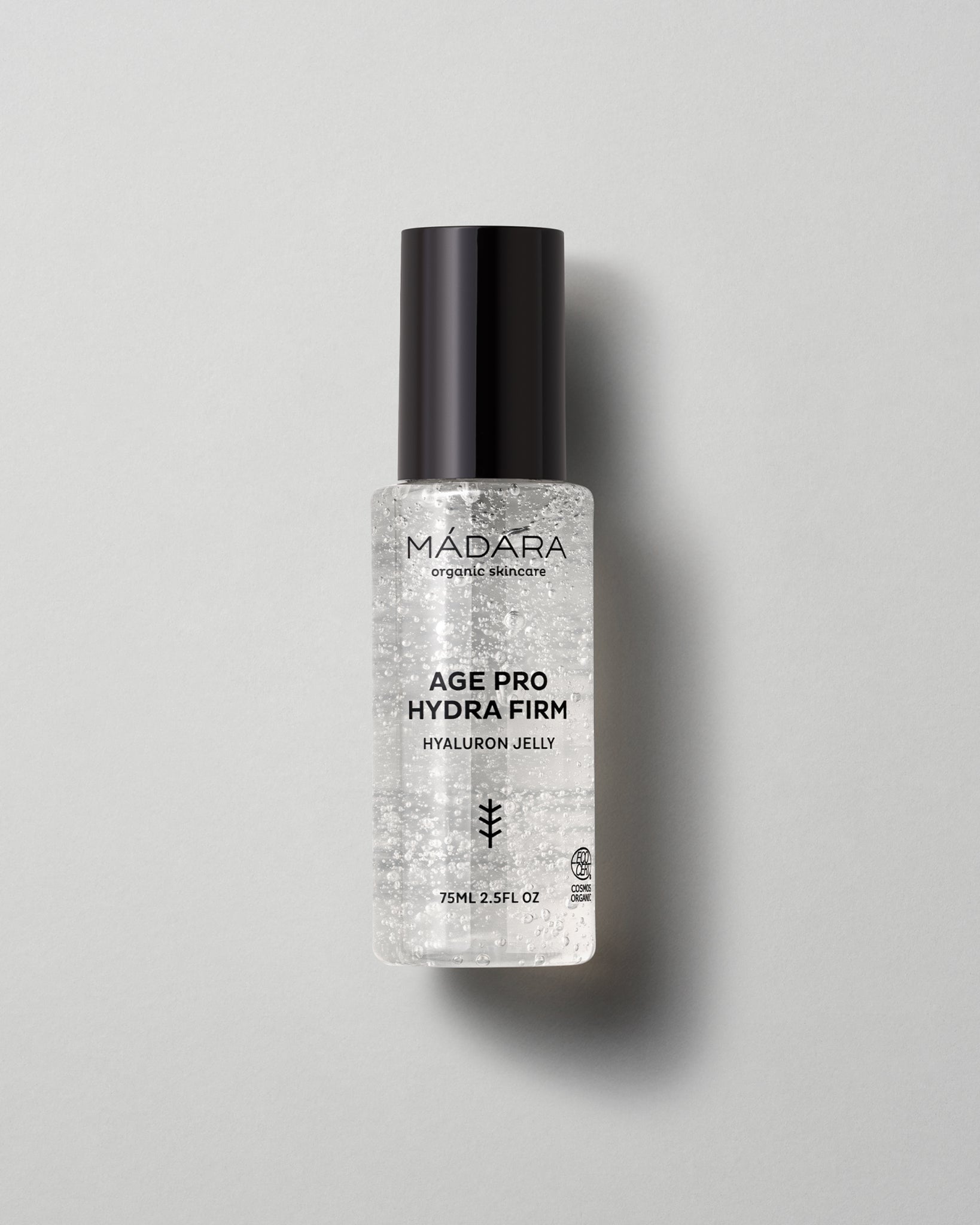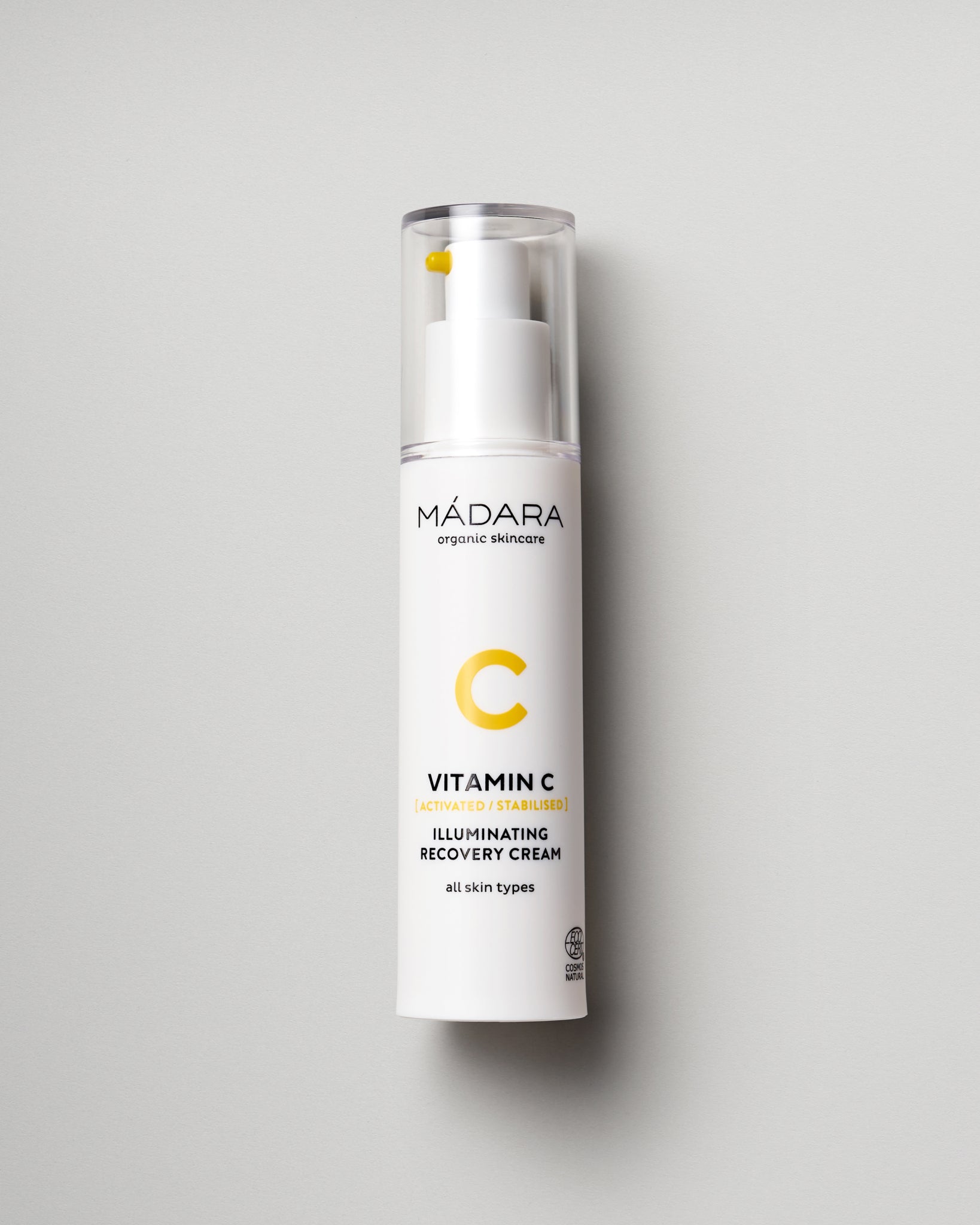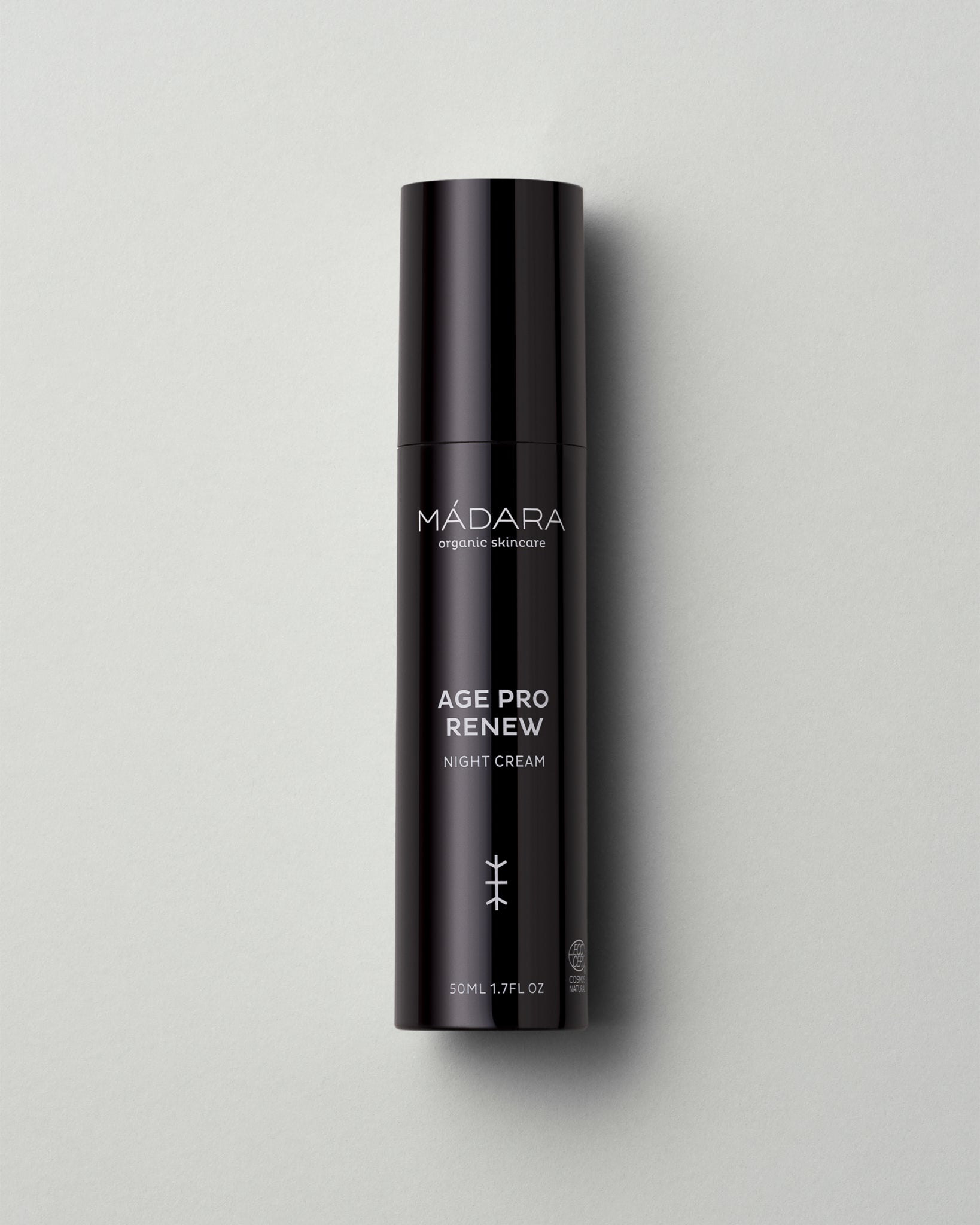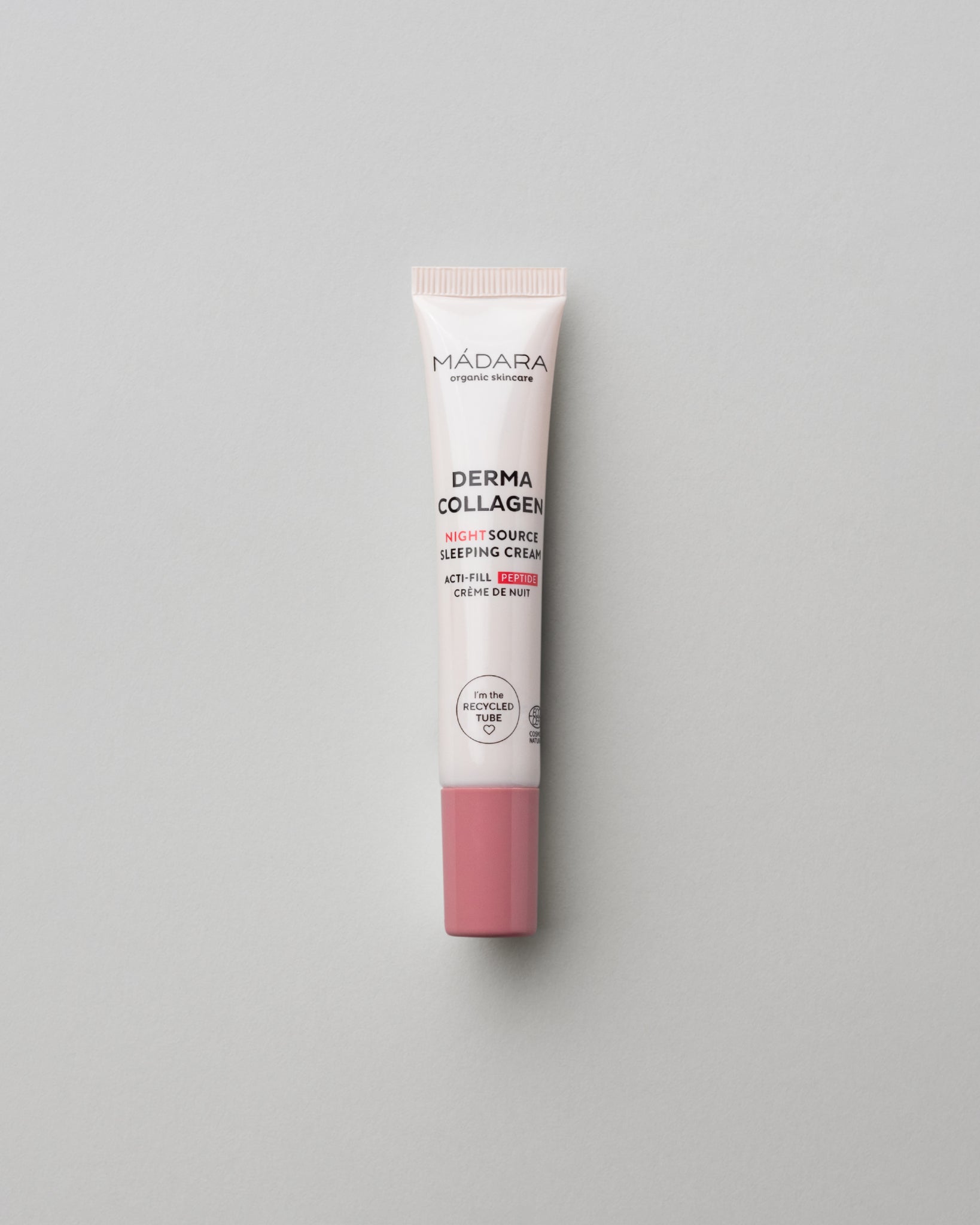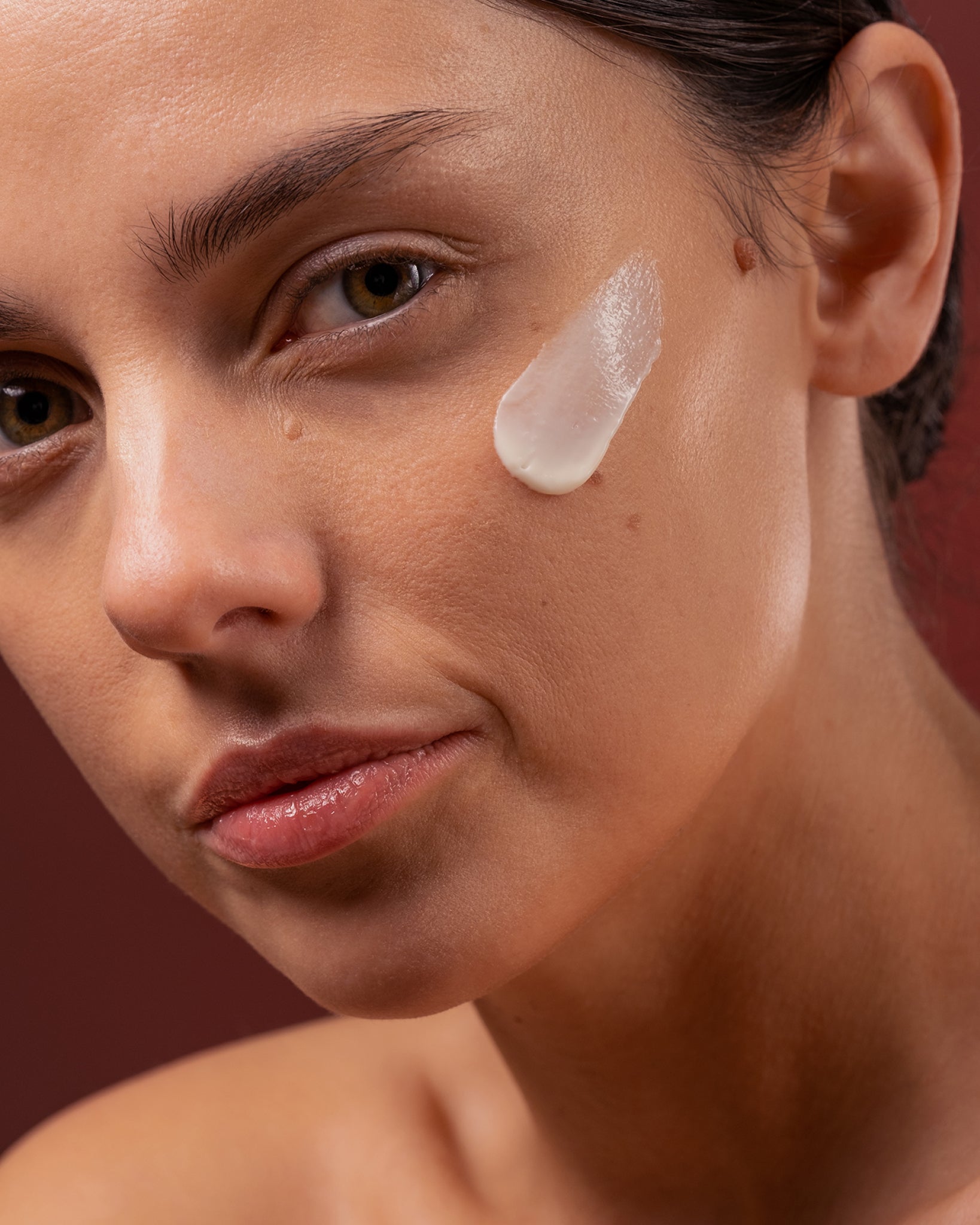Mineral Sunscreen: Your Skin’s Natural Sunblock
Introduction
In the pursuit of sun-kissed days without the damaging UV aftermath (think premature skin ageing, sun spots and dryness), it’s important to be sun smart—and this is where natural sunblock sweeps in.
Join us as we dive into the basics of mineral sunscreen and why it's your ticket to a naturally protected complexion.
What is mineral sunscreen?
First things first, sunscreen is the single most important product to have in your skincare routine. Trust us when we say that wearing sunscreen daily is crucial for protecting you from accelerated skin ageing and skin cancer.
That’s where mineral sunscreens come in - they physically block the sun’s harmful rays from penetrating the skin, thus helping to prevent sunburn, fine lines, wrinkles and other sun damage.
How does mineral sunscreen work?
Mineral sunscreen works by using mineral UV filters to create a physical barrier between your skin’s surface and the sun’s rays, reflecting and scattering them away from the skin.
Unlike chemical sunscreens that absorb UV rays and convert them into heat, mineral sunscreens act like a shield, granting you broad-spectrum UVA/UVB protection.
What are the benefits of mineral sunscreen?
Apart from shielding your skin from the sun’s harmful touch, there’s plenty.
✓ Gentle
Because they sit on top of your skin, mineral SPFs tend to be much less irritating than chemical ones which work by absorbing both the product and UV rays into the skin instead. This is also why mineral sunscreens are the preferred choice for sensitive complexions.
✓ Effective immediately
Since mineral sunscreens act as a physical barrier, they provide immediate sun protection upon application, meaning there’s no need to wait before sun exposure. However, we still recommend allowing your sunscreen to dry for a few minutes—this will make it harder for you to accidentally rub it off.
✓ Environmentally conscious
Unlike some chemical UV filters which have been found to be harmful to our ecosystem, natural sunblocks are considered to be reef-safe and pose minimal risk to aquatic life.
What are the key ingredients in mineral sunscreen?
Mineral sunscreens are armed with mineral filters such as zinc oxide and titanium dioxide. These naturally occurring minerals team up to ensure broad spectrum protection against UVA and UVB rays, effectively guarding your precious skin against sunburn and damage.
Zinc oxide
This white, powdery mineral is renowned for its broad spectrum protection, effectively safeguarding your skin from both UVA and UVB rays. The primary mechanism of zinc oxide lies in its ability to reflect these rays away from the skin, much like a mirror.
✓ Low potential for irritation
zinc oxide is generally well-tolerated by all skin types, including sensitive complexions.
✓ Low risk of absorption
research shows that zinc oxide is unlikely to penetrate the outermost layer of the skin as opposed to chemical UV filters which can potentially enter our bloodstream.
✓ Non-comedogenic
zinc oxide is less likely to clog pores, making it a great choice for acne-prone complexions.
Titanium dioxide
Titanium dioxide is another mineral with remarkable UV-blocking properties. Similarly to zinc oxide, it works to reflect the harmful UV rays, preventing them from reaching the deeper layers of the skin.
✓ Gentle on the skin
titanium dioxide is suitable for all skin types—even sensitive skin.
✓ Non-irritating
titanium dioxide is unlikely to cause irritation, making it suitable for those who are concerned about potential skin sensitivity.
Tinted mineral sunscreen
Long gone are the days when mineral sunscreen was synonymous with thick, chalky formulations. The inclusion of mineral pigments like iron oxides eliminates the once-dreaded white cast, offering both protection and coverage.
The added tint makes the sunscreen blend seamlessly into the skin while unifying your complexion for a sheer, undetectable finish


What does SPF stand for?
The SPF aka sun protection factor aka the number on your sunscreen bottle essentially indicates the level of UVB protection provided by the product. The higher the SPF rating, the less UVB rays can make their way through the sunscreen barrier and do the damage.
One must know that UV radiation consists of different wave lengths. Longer ones are called UVA, the shorter ones - UVB. The SPF indicates the protection level only against the UVB rays, However, UVA rays are also dangerous to our skin. Therefore, you should make sure that your sunscreen offers broad spectrum protection. In this case, besides SPF, there is also a logo that has letters UVA inside a circle.
Typically, we suggest reaching for an SPF of 15 or higher every day but preferably SPF30—especially if you know you’ll be spending time outdoors.
Going somewhere sunny? Opt for SPF50 when spending time in intense sunlight or pursuing high-altitude activities like skiing or hiking. But if your skin is prone to burning easily, always go for a minimum of SPF30 or 50.
However, it’s important to note that sunscreen should be reapplied every 2 hours, regardless of the SPF level of the product, to ensure your skin is adequately protected.
What is the best sunscreen for me?
Finding your sunscreen match is key to blocking the harmful effects of the sun’s UVA/UVB rays and warding off premature skin ageing.
While the task might seem daunting, it doesn’t have to be. Here, we bring you a line-up of MÁDARA natural sun protection solutions that look, feel and do good—take your pick and build your best sun care routine today.
Choose your favorite ↓
Tips: SAULES AIZSARDZĪBA
SPF 30 Age-Defying saules aizsargkrēms ar augu cilmes šūnāmTips: SAULES AIZSARDZĪBA
SPF50 minerālu saules aizsarglīdzeklisTips: SAULES AIZSARDZĪBA
SPF 50 Ultra-Shield saules aizsargkrēms ar augu cilmes šūnāmTips: SAULES AIZSARDZĪBA
SPF30 antioksidantu saules aizsargkrēms ķermenimFAQ
What makes MÁDARA mineral sunscreen different from chemical sunscreens?
What makes MÁDARA mineral sunscreen different from chemical sunscreens?
MÁDARA mineral sunscreens use zinc oxide and titanium dioxide as natural filters that sit on the skin’s surface and reflect harmful UV rays. Unlike chemical filters that absorb into the skin, mineral sunscreens provide instant, broad-spectrum protection while being gentle on sensitive skin and safer for the environment.
Is MÁDARA mineral sunscreen safe for coral reefs and marine life?
Is MÁDARA mineral sunscreen safe for coral reefs and marine life?
Yes. All MÁDARA mineral sunscreens are formulated without oxybenzone, octinoxate, or other reef-damaging filters. They rely only on non-nano mineral filters, making them a more eco-conscious choice for sun protection in oceans, lakes, and rivers.
Can I use MÁDARA mineral sunscreen on sensitive or acne-prone skin?
Can I use MÁDARA mineral sunscreen on sensitive or acne-prone skin?
Absolutely. MÁDARA mineral sunscreens are dermatologically tested and free from synthetic fragrances, silicones, and microplastics. The lightweight formulas are designed to protect without clogging pores, making them suitable for sensitive, acne-prone, or reactive skin types.
Does MÁDARA mineral sunscreen leave a white cast?
Does MÁDARA mineral sunscreen leave a white cast?
MÁDARA uses ultra-fine, natural mineral filters combined with skin-care actives to create sunscreens that blend smoothly into the skin. While all mineral sunscreens may leave a subtle tint at first, MÁDARA formulas are optimized to minimize white cast and provide a natural, wearable finish.
Why should I choose MÁDARA mineral sunscreen over other natural brands?
Why should I choose MÁDARA mineral sunscreen over other natural brands?
MÁDARA is a certified organic, ECOCERT-approved skincare brand from Northern Europe, known for its commitment to clean beauty and ecological responsibility. By combining scientifically backed actives with sustainable packaging and ethical sourcing, MÁDARA mineral sunscreens deliver not only effective sun protection but also align with the highest ecological and skin-friendly standards in Europe.

